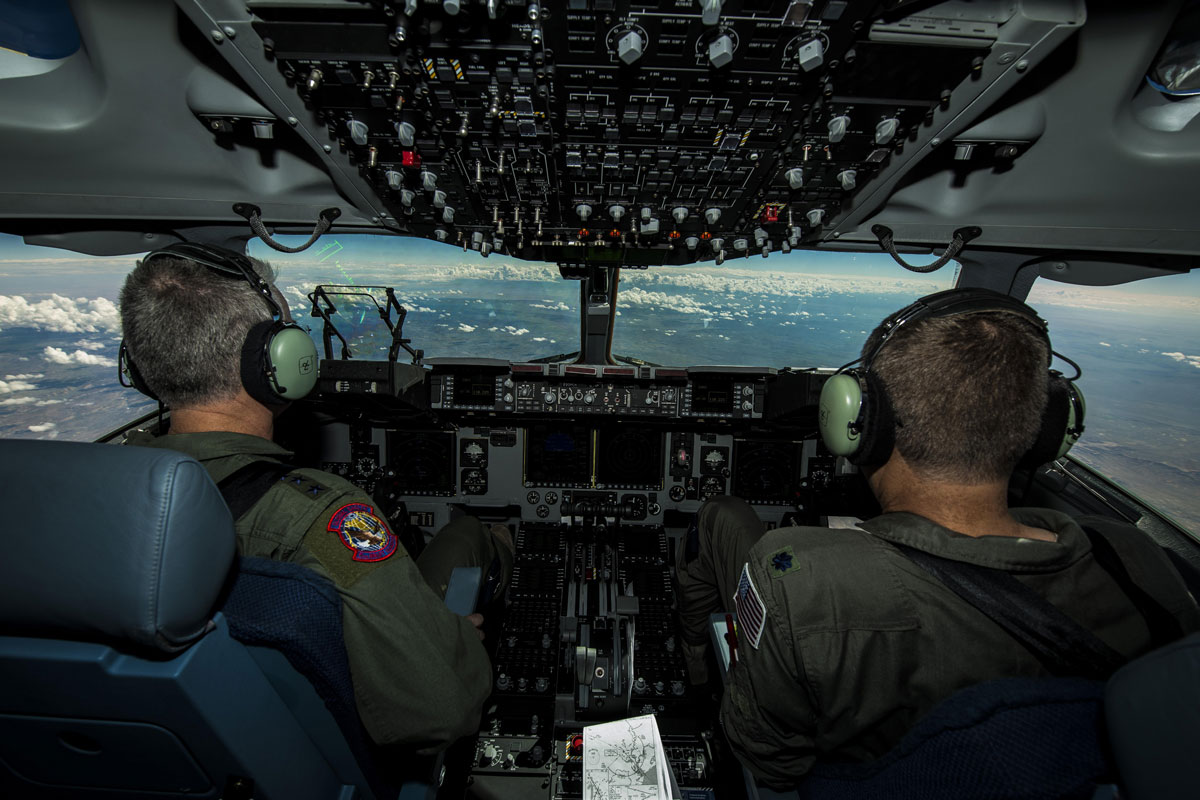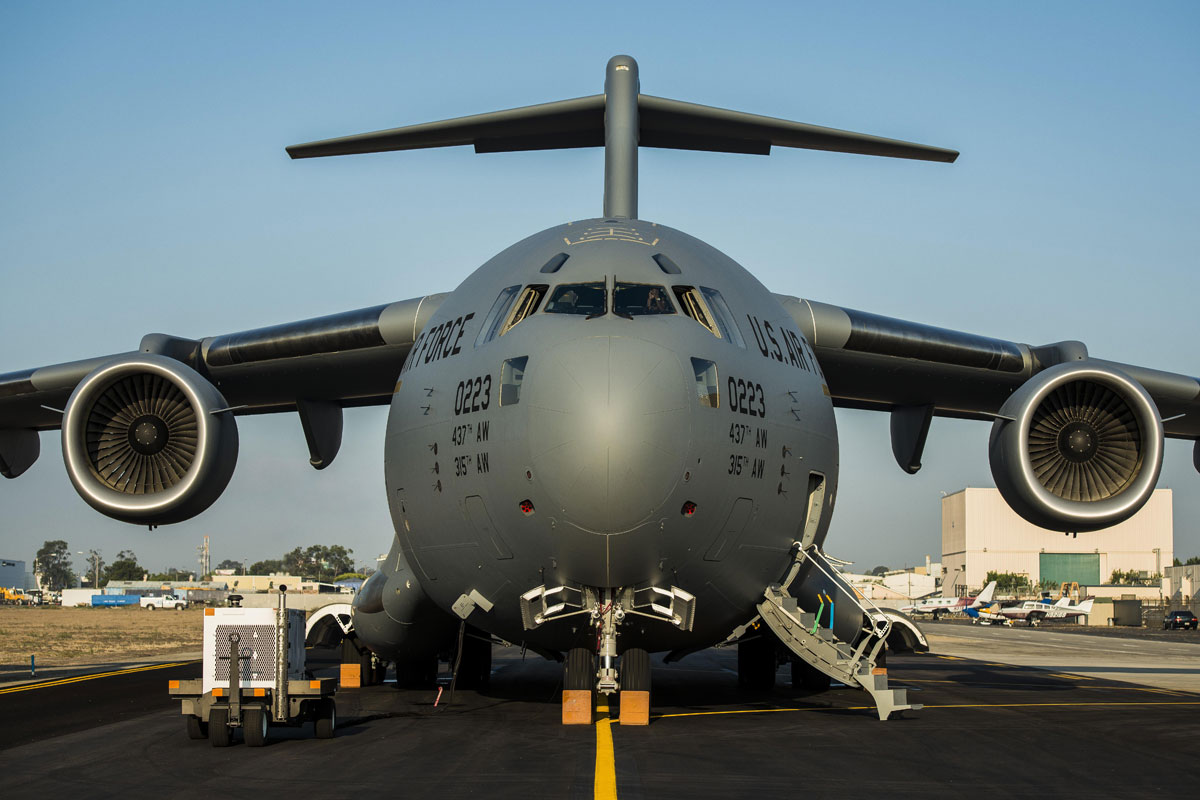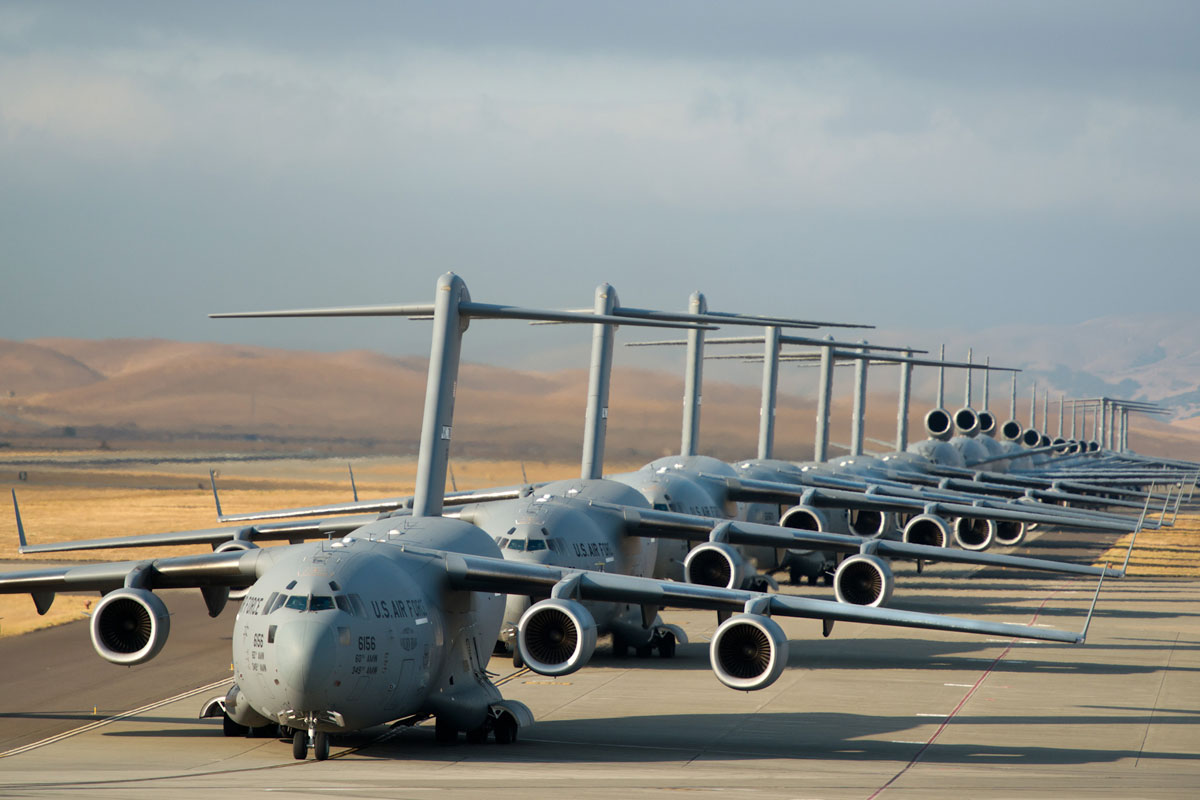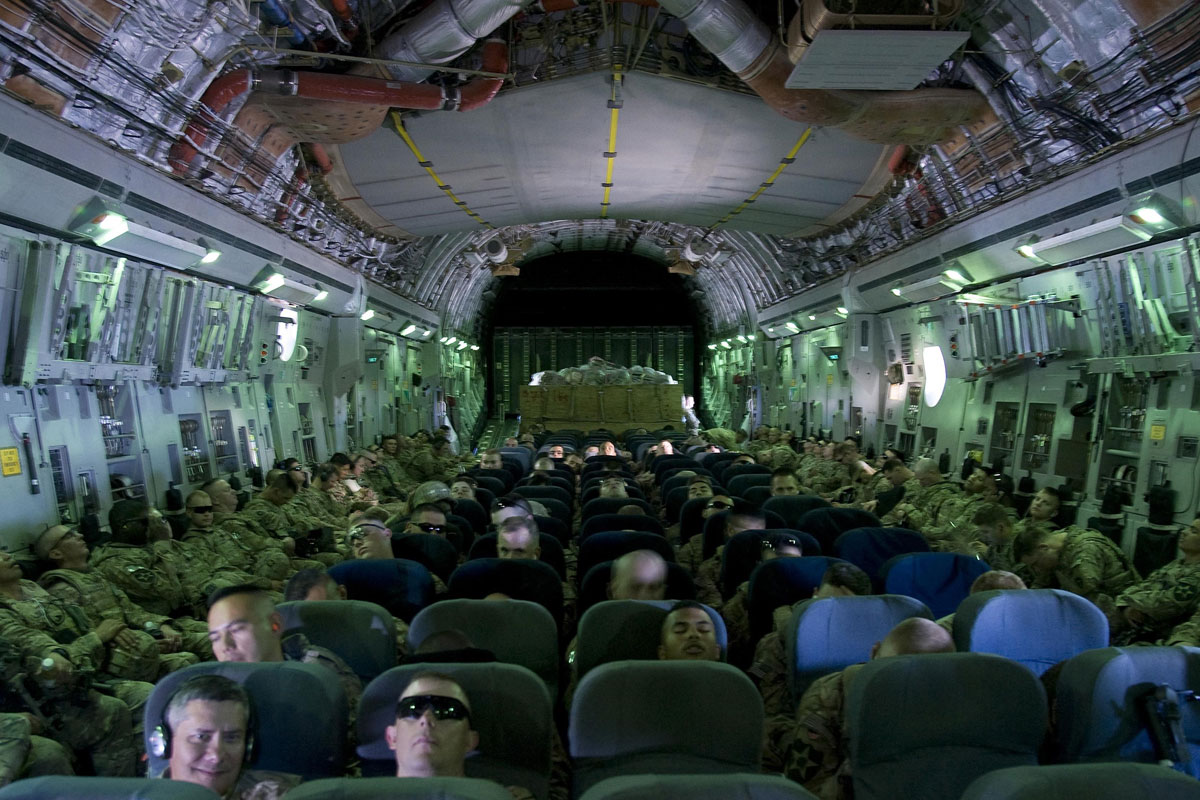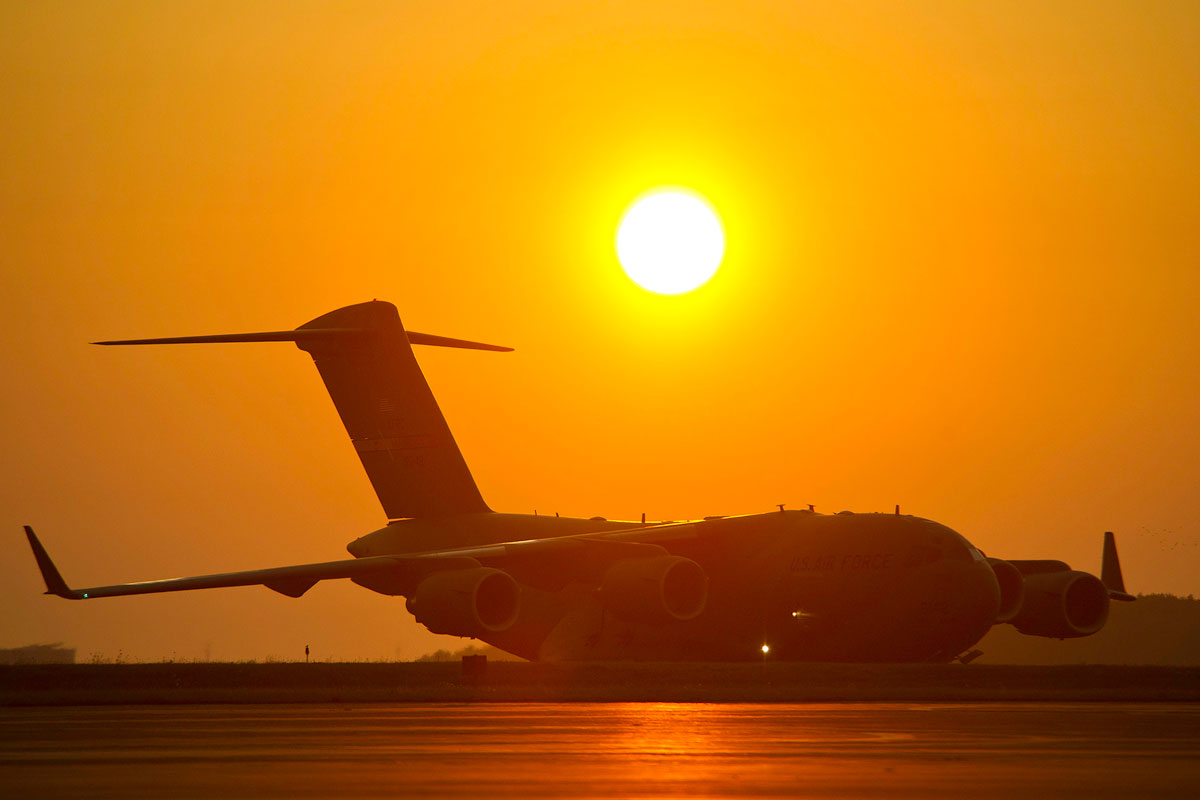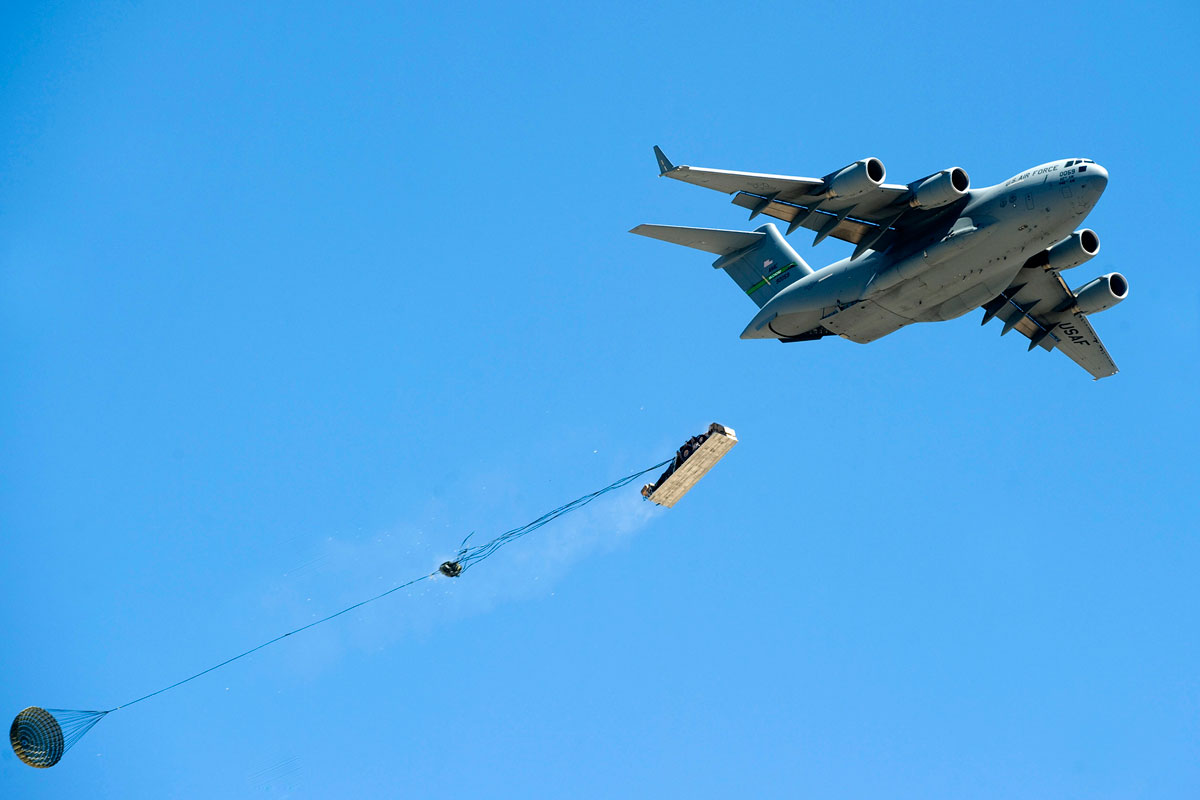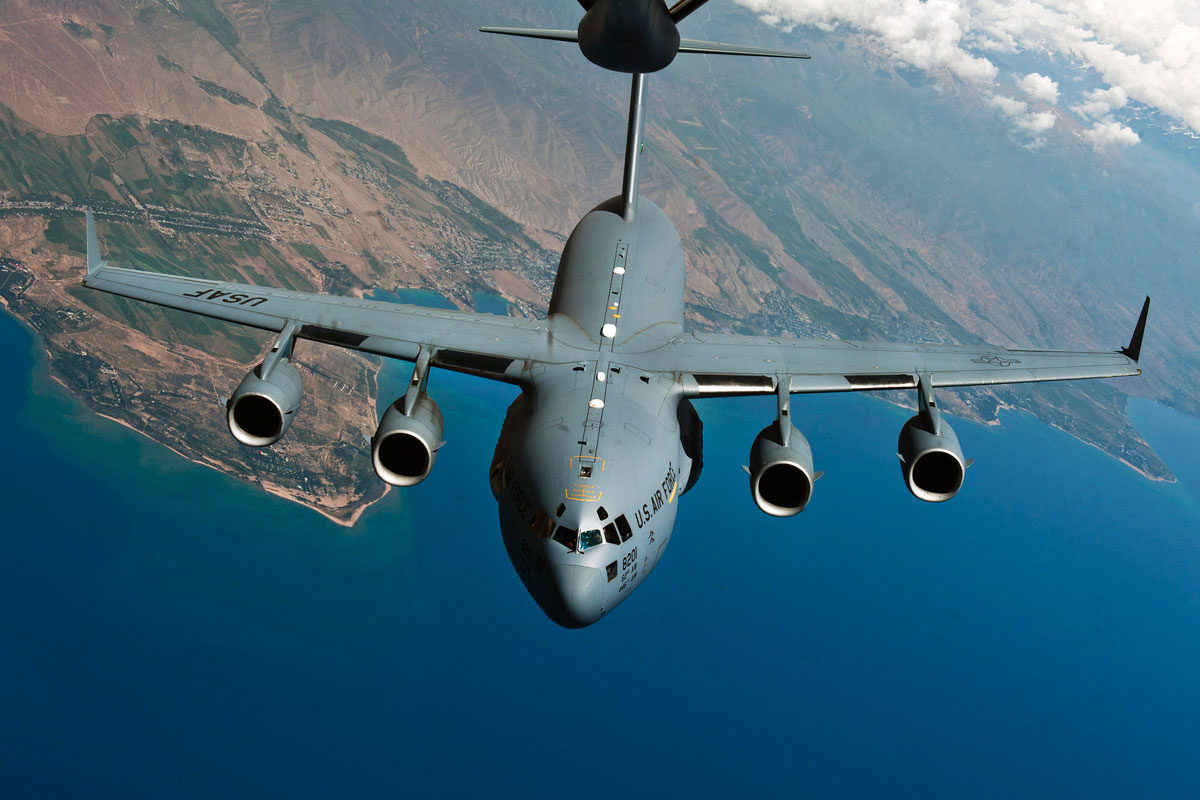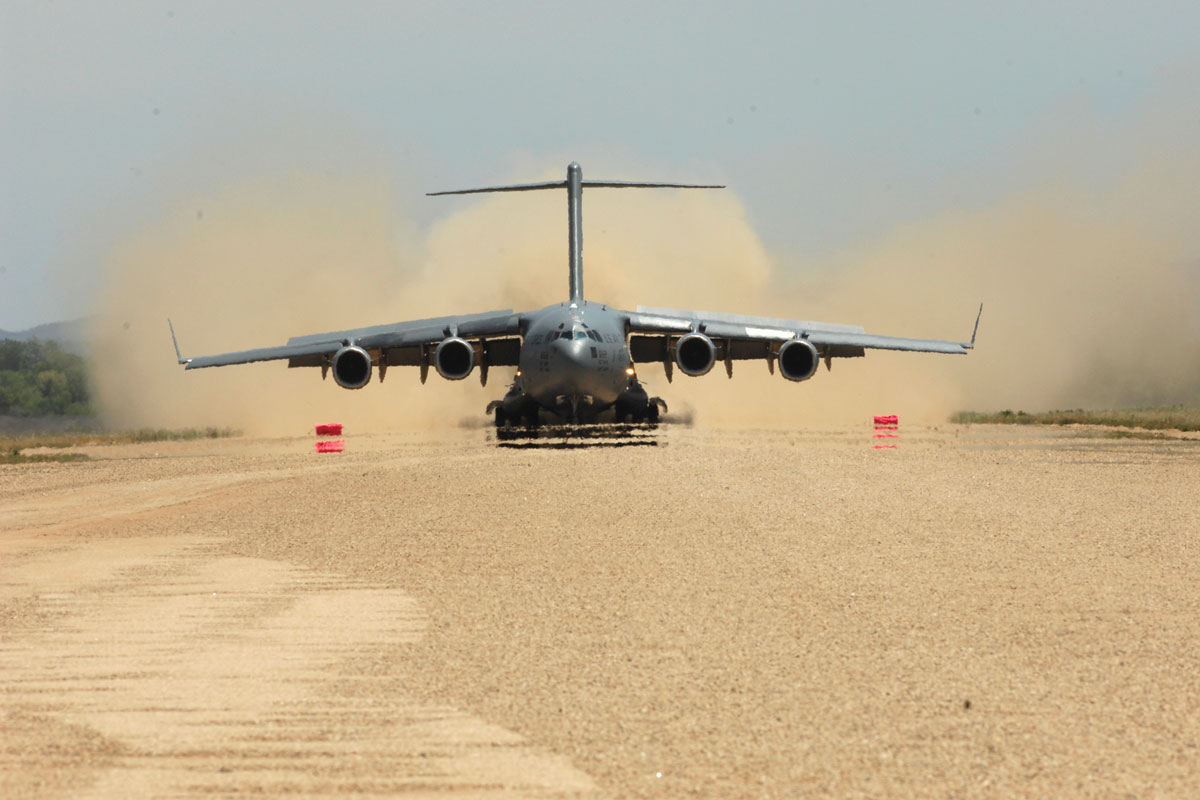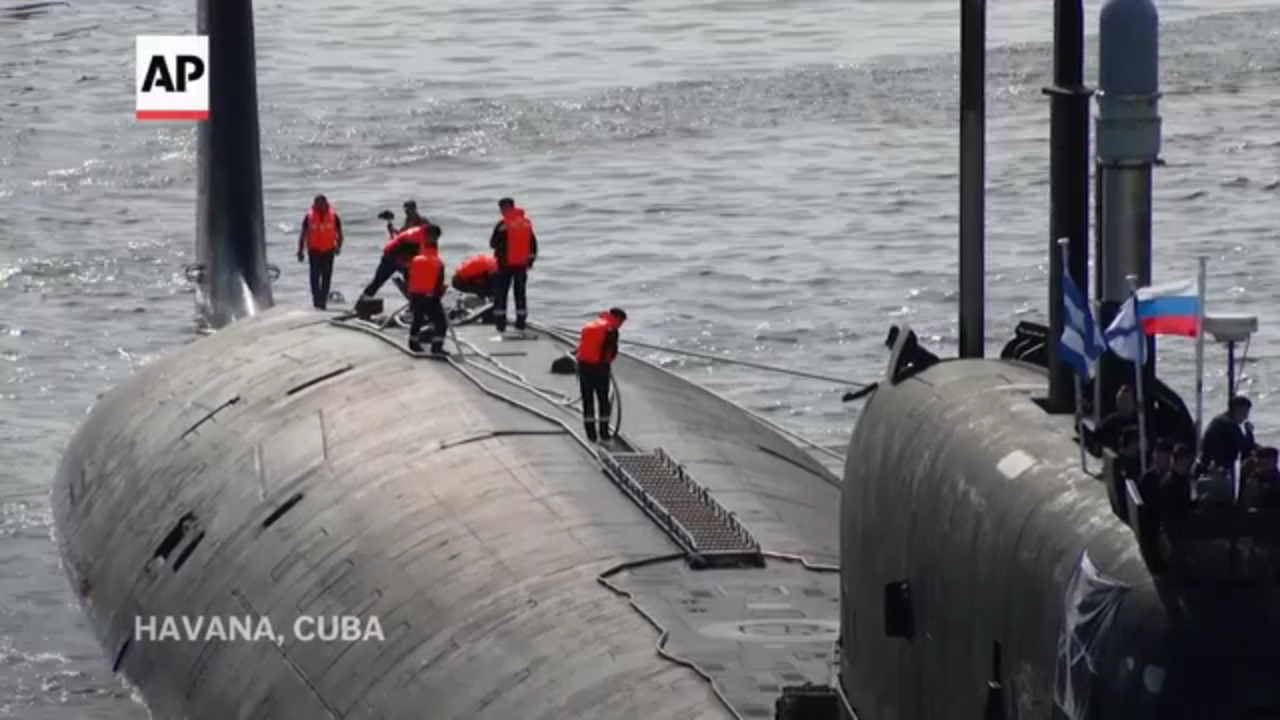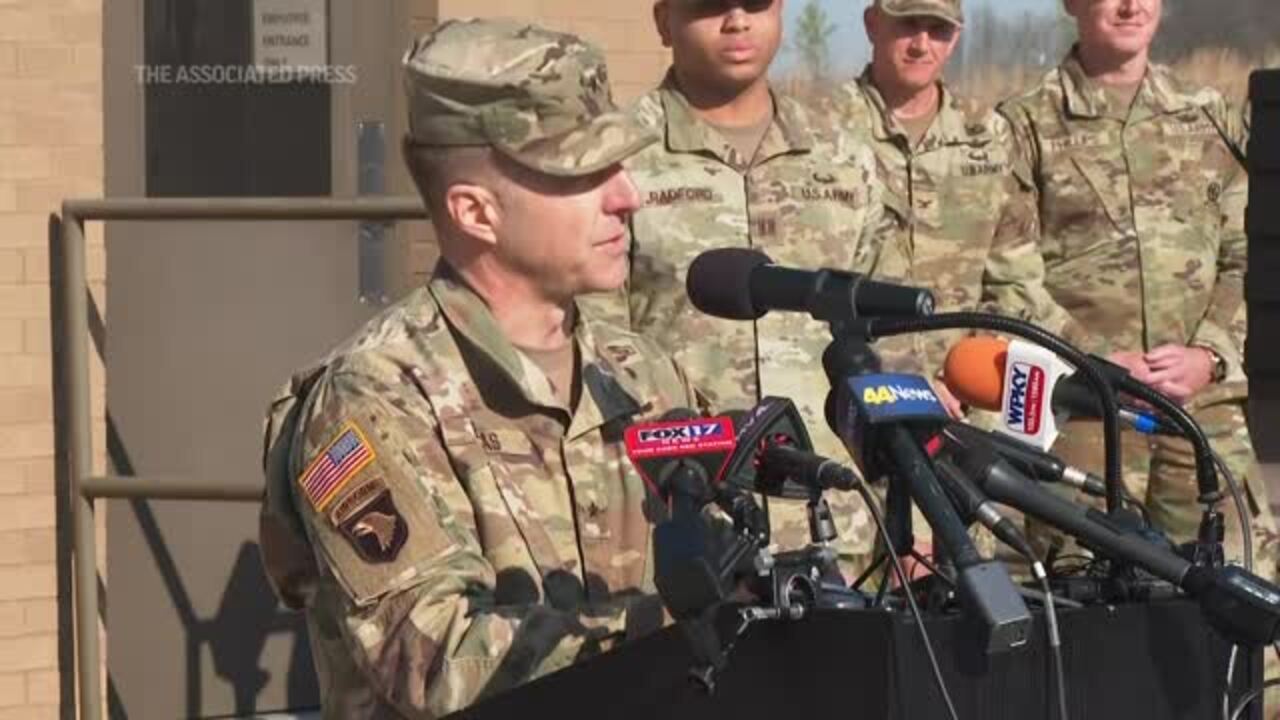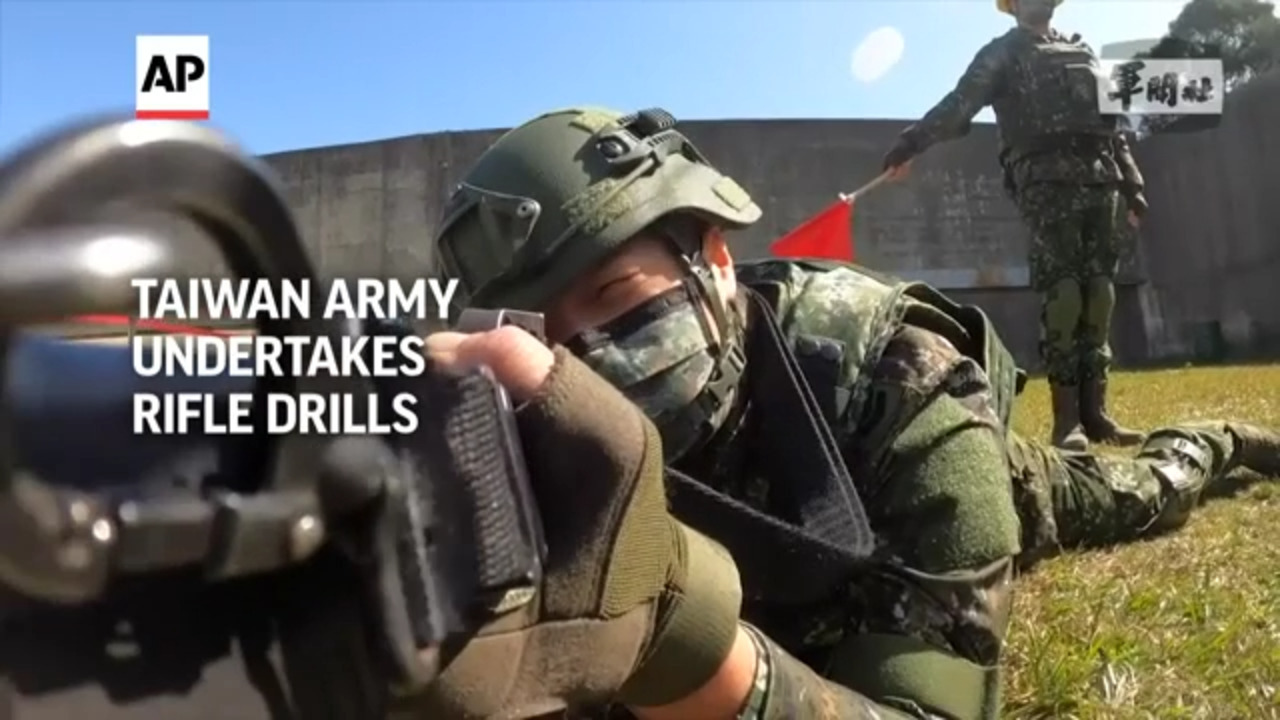Manufacturer: Boeing
Services: U.S. Air Force Propulsion: 4x Pratt & Whitney F117-PW-100 turbofan engines Speed: 450 kts Range: Global with in-flight refueling Crew: Three (two pilots and one loadmaster) Load: 102 troops/paratroops; 36 litter and 54 ambulatory patients and attendants; 170,900 pounds (77,519 kilograms) of cargo (18 pallet positions)The C-17 Globemaster serves as the U.S. Air Force’s primary strategic lift aircraft for global transport of troops and equipment. The C-17 is capable of rapid strategic delivery of troops and all types of cargo to main operating bases or directly to forward bases in the deployment area. The aircraft can perform tactical airlift and airdrop missions and can transport litters and ambulatory patients during aeromedical evacuations when required. The inherent flexibility and performance of the C-17 force improve the ability of the total airlift system to fulfill the worldwide air mobility requirements of the United States.
Reliability and maintainability are two outstanding benefits of the C-17 system. Current operational requirements impose demanding reliability and maintainability. These requirements include an aircraft mission completion success probability rate of 92 percent, only 20 aircraft maintenance man-hours per flying hour, and full and partial mission availability rates of 74.7 and 82.5 percent, respectively.
The Globemaster III was designed to be able to land on runways as short as 3,500 feet and as narrow as 90 feet. With engine thrust reversers, the C-17 can back up and turn around on very small runways in forward operating bases.
Designed as a replacement for the C-141 Starlifter, the C-17 made its maiden flight on Sept. 15, 1991, and the first production model was delivered to Charleston Air Force Base, now known as Joint Base Charleston, S.C., on June 14, 1993. The first squadron of C-17s, the 17th Airlift Squadron, was declared operationally ready Jan. 17, 1995.
The C-17 is operated by Air Mobility Command at Travis AFB, Calif.; Dover AFB, Del.; Joint Base Lewis-McChord, Wash.; Joint Base Charleston, S.C., and Joint Base McGuire-Dix-Lakehurst, N.J.
The Air National Guard flies C-17s from the 172d Airlift Wing, Jackson, Miss., and the 105th Airlift Wing, Stewart ANGB, N.Y. Additionally, Air Force Materiel Command operates two C-17s at Edwards AFB, Calif., and Pacific Air Forces operates aircraft at Joint Base Elmendorf-Richardson, Alaska, and Joint Base Pearl Harbor-Hickam, Hawaii.
The Air Force Reserve Command operates aircraft at March Air Reserve Base, Calif., and Wright Patterson AFB, Ohio. Air Education and Training Command has 17 aircraft at Altus AFB, Okla.
